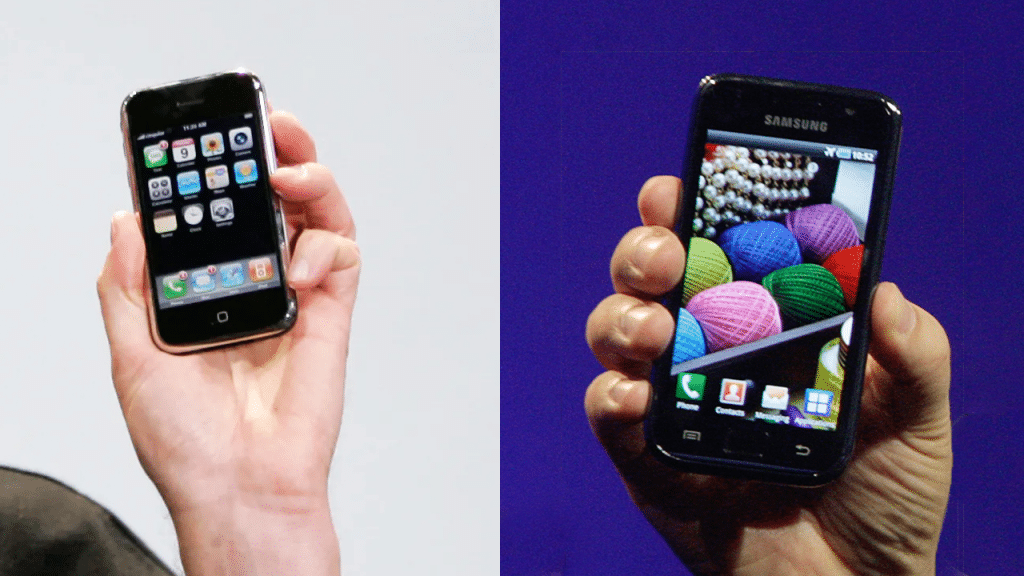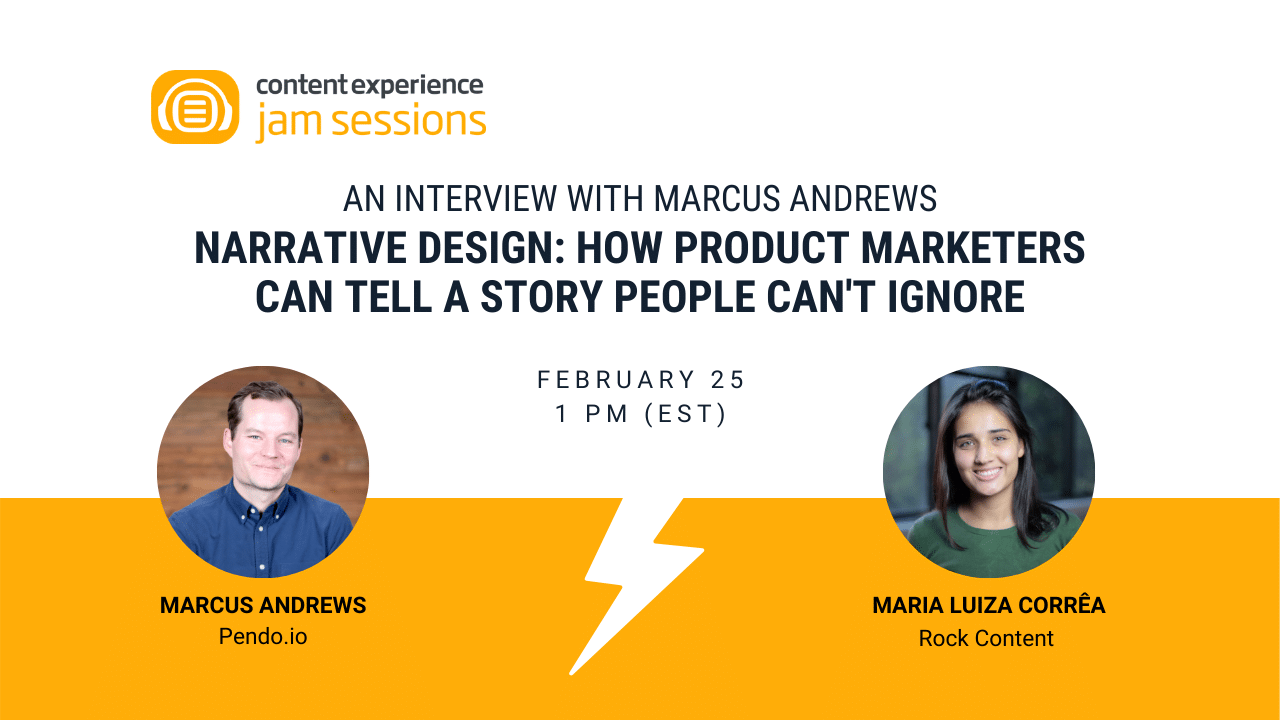Social media and Inbound Marketing always give positive results for marketing strategies.
But what happens with time if everyone realizes this? That’s right, when all brands want to stand out in a medium, very few of them actually succeed.
In competitive fields such as Digital Marketing, just doing what worked for some won’t guarantee it will work for you too. Understanding what your product’s story is and creating a unique, compelling strategy is the right approach.
That’s what Narrative Design is about for marketers. In this post, we will go over the following topics:
What is Narrative Design?
To give you a better understanding of what Narrative Design is, we can take a look at a different professional position that shares the same denomination, even if they aren’t exactly related.
We need to talk about video games. Unlike movies, in a game, you can’t predict how a story will be exactly told, because a lot of it depends on the player’s interaction.
So how do you engage them from the start and make sure your narrative is fresh, compelling, and unique?
These professionals build a world around their product — in this case, the story. They create a believable scenario with their own rules and limitations, and they give the players a chance to be a part of it.
Great stories in video games aren’t made just of text displayed on the screen. It is in every element of itself.
So how does all of this relate to marketing?
Think about the tools you have at your disposal right now to build a brand and call the audience’s attention to a product: Content Marketing, Live Experiences, Social Media, niched discussions.
Engagement and interaction are now part of the game marketers play. Positioning your product in the same spaces where there is already competition will only make it be seen as another one in the mix.
Here is where Narrative Design becomes a concept for Digital Marketing.
Creating a story for a product and inviting people to be a part of it can take you out of the existing categories and create a new room in their minds, just for that brand.
In more objective terms, Narrative Design is a strategy to create a unique story for a product and plan the content streaming that will deliver it in an engaging way to the buyer persona.
Why is Narrative Design Important?
Narrative design is increasingly important to the success of your product marketing strategy going forward because there is already so much noise online. Finding ways to get through to your target audience is getting harder and harder, so you need to dig deep and get creative.
This approach can help you deliver a unique story and create a new way of interacting with customers. It crafts a separate world or category that only you and they inhabit. Narrative design can also keep those customers close to your brand for the long term.
In essence, you are building a new reality in the buyer’s mind, and both you and your customers will benefit.
What is the difference between Narrative Design and Product Positioning?
To better understand Narrative Design, we can compare it to the closest concept most CMOs already know: Product Positioning. They seem to be the same thing at first, but their approaches make a world of difference.
Product Positioning is a strategy that became more accessible to companies as software and services evolved to bring solutions on how to plan and distribute content.
The idea is to create a story for your branding that shifts the audience’s perception about it, as something they have never seen in your competitors, and they feel that can be a part of their daily lives.
To exemplify this difference, we can think about Apple and Samsung’s strategies back at the beginning of the smartphone era. The iPhone was thought of entirely from a Narrative Design point of view. They not only showed us a better device but a new world that we now live in.
On the other hand, Samsung made their first modern smartphones with a different, cheaper, and more practical approach.
Seeing the competition’s success, they created a new series to build the same premium image — the Galaxy S. While Apple did Narrative Design, Samsung did Product Positioning.

Neither approach is wrong. They both have their time and place to be used — they can even be activated simultaneously.
But it is undeniable that one of them is more powerful in fixating brands in people’s minds.
Those who create a new category will always be viewed as a trendsetter while that category exists.
Why are marketers using Narrative Design?
You probably are already thinking about the positive consequences of that difference. But why not dive deeper?
Here are some ways you can impact a product’s perception with Narrative Design!
Being more than a tool
A product sold only to be the answer to a need is just a tool. A product that combines function with form and context is much more. The costumer of the future is looking for meaning and identification when consuming a brand. Nothing can bring out those feelings more than good storytelling.
Being more engaging and persuasive
There is a reason why interactive strategies are becoming more popular among marketers in the digital field.
Engagement creates a stronger bond between customer and brand.
Narrative Design can bring to marketing the same power we discussed in video games.
When a story pulls the buyer persona into a product’s world and allows them to be a part of it, the brand gets more shares, more discussions, and more conversions as a result.
Lowering the CAC
Every CMO noticed this in recent years: customer-acquisition costs are rising, exactly because there are so many players fighting for their space.
Trying to force your way into the crowd can work sometimes, but differentiation is always the best approach.
If Narrative Design creates interaction, that’s a sure path to lower that investment.
Engaged prospects are more prone to follow the buyer’s journey and share their experience along the way — increasing the reach of your acquisition channels.
Leaving a mark
Even if you have the best product, it won’t guarantee that the public sees it that way.
After all, every brand says they are the best.
How do you convince people you are the one telling the truth?
Nothing does that better than a good story. Narrative Design can not only create a new category in which your product is the leader but also make the story connected to it be remembered for years.
Let’s go back to the iPhone example. More than 10 years later, its first keynote is still a case studied by marketers worldwide.
Why can’t you also do that with the right narrative for your audience, even if on a smaller scale?
What are the Main Components of Narrative Design for Product Marketing?
While all stories have similar components, those involved with the narrative design for product marketing can differ slightly in titles and definitions. Essentially, these differing main components include the following.
Customer/Buyer Persona
Your narrative design will star the buyer persona that has proven to be one of your best customers. Called the main character in novels and films, this customer type will be the one you focus your narrative towards and continue to build communications for and around.
Specific Change
A specific change in the world occurs, creating the need to look at things in a different way. That identified change is the main element in your narrative, jumpstarting the conversation and threading its way throughout the story surrounding your product.
Environment (Setting)
Identify the environment, or setting, in which this change and your customer cohabitate. In narrative design, this aspect will add elements of surprise and not simply conform to what is known and seen in the everyday version of the world. It will help your customer better visualize the initial situation and how it evolves throughout the narrative or story.
Conflict
You must have a conflict that confronts your audience due to the identified change. This is the “villain” of your story, and it stands in the way of making the most of the new situation. The personification of this conflict, or villain, is the key.
Do this right, and your target audience will rally alongside you, seeking out a solution, solving the problem, and adding to their quality of life.
To further your product marketing strategy, you’ll need to analyze this conflict, how it affects your customers, and how your product can change the circumstances. While conflict is a keen motivator, it needs to be presented in such a way that makes it imperative to take action.
This component builds anticipation for finding a suitable resolution.
Resolution
Your resolution of the conflict, or solution, is the ultimate destination for your customers. It is the promised land you will create as a result of your particular product and the features and benefits it bestows.
As long as you have a strong grasp of your customer’s pain points, wants, and needs, you can incorporate all of these into your narrative design strategy and into what your resolution ultimately becomes. Show that your product, your resolution, is the one that can tie all the pieces together and make a true difference in your customers’ lives.
What Does a Narrative Designer Do?
Narrative designers in the gaming industry are more common today than those found in other fields, such as marketing. Yet, the basic strategies can be used by anyone. So, with that being said, what, in general, does a designated narrative designer do?
Essentially, the role of this type of designer is to craft a narrative bridge connecting each scene of your story to the next. This narrative bridge continues to further the storyline and ties the entire narrative together from start to finish. In other words, they take the customer from point A all the way over to point Z in the best way possible.
To break this down even further, a narrative designer does the following.
- Determines how best to branch out the story or narrative surrounding a product, essentially mapping everything out ahead of time and allowing for adjustments, changes, and adaptations that can occur.
- Splits the story into smaller parts (along the linear structure), creating different conversations with the target audience along the way.
- Defines scenarios and how they evolve.
- Creates connections between scenes.
- Collaborates with other team members at each stage, including product development, product design, marketing, and sales.
A narrative designer needs to remain adaptable to sudden changes or shifts in the overall design process and be able to adapt the narrative to address them in the most natural way possible.
The scope of a narrative designer continues to evolve today, particularly in fields beyond gaming.
The Narrative Design Framework
To design a narrative that works, it helps to have a framework to start from, whether you need to tell a story to boost product value and success or to advance game design and user experience. This framework may be used again and again to outline and accomplish your narrative’s strategic goals.
Here is what such a framework may include.
Begin by Looking for Changes Worldwide that Impact the Target Audience
Look for changes in the world around you, particularly in behaviors and trends that affect people in some specific way, requiring a need to adapt. Zero in on these and analyze each one until you understand them fully and how they impact your target audience.
Define and Clearly Communicate How the Change Impacts Your Customers
Define and articulate the change in clear terms that your audience can understand and relate to. Do it in a way that shows you share in their concern, confusion, or other identifiable emotion or mental state. This shows you care about finding a solution that benefits their well-being.
Once you have clearly described what the change is, your target audience will see it clearer also, and that helps them jump on the bandwagon and be more ready to take some type of action.
Offer a Way to Adapt to that Identified Change
Offer your target audience a way to address the identified change and how they can adapt in order to minimize any negative impacts it can cause. This adaptation will require a new process, one your organization has identified as valuable and helpful.
Empathize with Challenges
Show that you understand the challenges involved when attempting to adapt to a change. Identify each potential hurdle and the different paths that can cause confusion and challenge for your target audience, then tie them all together and lead your customers to a viable solution – you and your product.
Introduce your Solution – the Product and What It Can Do
Introduce your solution, which is the product you created, and express how it addresses the change and its potential impacts. This product may be entirely new or an already existing one that you are rebranding to show how it meets even more of today’s needs.
In this part of your narrative design, discuss how your organization has been evaluating the challenges and now offers a product that will help them adapt more easily and successfully to that change. Be detailed in how you approach this part. Remain customer-centric, and show them how you and your product can help them reach the so-called promised land.
While starting with a framework such as this is helpful, also keep in mind that originality is key to the success of your narrative design. You need to stand out with something that doesn’t conform to everyday ideas, processes, and solutions. Uniqueness is what will win the day for you, your brand, and your product.
How can you prepare your team to start a Narrative Design strategy?
Obviously, Narrative Design demands planning, data, and really hard work.
If it was like a switch to make it happen, every marketer would be doing it. And what is the point of doing the same as everyone if your goal is exactly to stand out?
The problem here is that many companies, and even some CMOs, are always looking for a formula that will never exist.
Developing a Narrative Design strategy is about knowing your public, your product, and the world you want to create.
Let’s see how you can start doing it!
1. Get even more data about your target audience
When planning strategies, marketers are already used to data gathering — about the buyer persona, the competition, the best channels to use. But to create your own category based on a narrative, you’ll need more than that.
The protagonist of your story will always be your customer, but how can they be introduced into your product’s world in a valuable way?
What pains do they have that every brand is trying to solve, and how can you make a story with a new, fascinating journey that they can’t find in other content?
So this is not only about age, habits and financial situation. It is also about aspirations, dreams, and meaningful emotions.
A brand needs to know its audience’s lives better to find the right space in them for its product.
2. Consolidate the world and invest in all kinds of content
Narrative Design needs to have a cohesive world, understandable rules, and a path to guide your customer. It means that what will consolidate your campaign will be the map you layout for it.
Your world map is all the content you create to tell your story, the ways you invite the buyer persona to be a part of it, and your distribution channels.
As we mentioned, Interactive Content can be a great place to start.
The most important thing when telling a story is the balance between setups and pay-offs. Build the hype and deliver it.
When you get the whole plan done before putting it to action, it’s easier to find these major plot points, how you can reinforce them, and the shortest path to the end of the journey: your product as a brand-new category in which it reigns absolute.
3. Build your own saga
When a marketer succeeds in using Narrative Design, the result is a product known for its innovation and disruptiveness. But that aura won’t last much if you stop there.
Like the great literature sagas, you can think about this strategy as a first chapter that asks for sequels.
You can go back to the first plan and build a new one whenever you see the need for a new product positioning or even another transformation.
Narrative Design has this power. And remember that audiences love a good plot twist.
Want to know more about the planning and execution of great Narrative Design strategies?
Watch our recorded Webinar Jam Session: Narrative Design: How product marketers can tell a story people can’t ignore — an interview with Marcus Andrews!
Let Narrative Design be the New Way You Approach Product Marketing
Narrative design may just be the golden egg you’ve been looking for to advance your product marketing strategy. Not only will it help your customers find a resolution to a real change, but it can also enhance your bottom line.
Once you have a strategy for your narrative design mapped out, however, you still need to create the story or communications that will stir up your target audience and greet them at each step along the way to resolution. That is where WriterAccess can help.
We provide you with access to hundreds of experienced writers and the ability to find the ones that can seamlessly work with you and your team to create narratives that speak to your target audience. The best way to see how this works and how your brand can benefit is by signing up for the WriterAccess 2-week free trial today.









